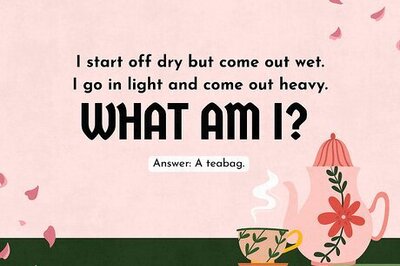
views
CHENNAI: By May, the world’s biggest consumer of silk — India, will for the first time have an indelible stamp of quality on silk products in the country. As against the existing tag of purity — which can be tampered with or removed by the user, the new stamp will be fused with the fabric and will have special authenticity marks, say members of the Silk Mark Organisation of India.The new silk marks, costing `4 each, will be affixed on silk products through a fusion transfer label system based on nanotechnology. In order to ensure that there is no duplication, a sentence ‘Promoted by the Government of India’ along with its Hindi version, will be visible only if the label is examined under ultraviolet light. For this purpose, every authorised seller of silk-mark products will be given the UV Light equipment, the seal affixing equipment, at a cost of Rs 2,000.“There is a simple way of checking whether a customer is buying pure silk or not. The customer will have to burn a thread of the product and if it smells of burning hair, and then leaves a black residue, it is pure,” explained Pandian, Director of the Silk Mark Organisation of India. “However, with silk saris considered gifts for special occasions, customers are hesitant to use a new sari’s thread for testing, Hence, all they need to do now is ensure that the silk product has a Silk Mark label.”Currently, paper-hang labels of Silk Mark are attached to silk products, but they are often removed before the item is used. The new stamp, however, will last several washes.Once the new stamping system comes into place, customers can not only ensure the presence of a mark, but also verify at a shop whether the mark is original. “The potential buyer can use the shopkeeper’s ultraviolet lighting equipment and test the stamp for the authentication sentence (Promoted by the Government of India),” explained Gananpathi Raman, Assistant Director of the Silk Mark Organisation.The indelible stamp will also have particles that will be visible only under infra-red lighting.Gold and silk are both bought most often by women, and there remain areas where chances of being cheated are very high,” explained R Desikan, founder trustee, Consumer Association of India, which recently organised a silk awareness programme at Guru Shree Shantivijai Jain College for Women. The event was organised jointly with the Silk Mark Organisation of India, and Co-Optex. India annually produces 19,000 metric tonnes of the magic fabric, while its annual demand is at least 10,000 metric tonnes higher. Currently, 1,700 sellers of pure silk products have been registered with the Silk Mark Organisation of India.


















Comments
0 comment